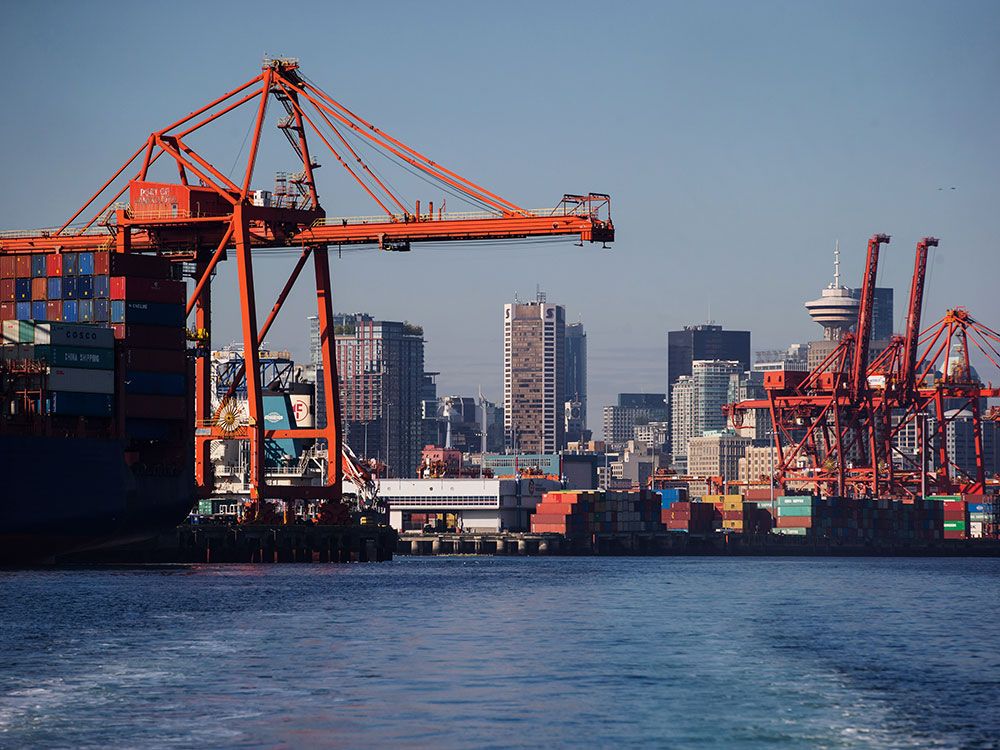Canada’s economy grows 0.3% as manufacturing, trade pick up

Statistics Canada predicts slower growth in May

Article content
Canada’s economy grew by 0.3 per cent in April, mainly driven by mining, wholesale trade, the oil and gas industry and manufacturing, Statistics Canada said Friday.
On an annual basis, the economy grew by 1.1 per cent compared to April 2023.
After struggling to grow at all through the last three quarters of 2023, the Canadian economy is showing a bit more of a pulse so far this year,” Bank of Montreal chief economist Douglas Porter said in a note on Friday. “On balance, growth is holding up a touch better than widely expected in 2024, but remains generally lacklustre.”
Advertisement 2
Story continues below
Article content
Manufacturing grew by 0.4 per cent after retracting 0.6 per cent in the first quarter of this year. Retail trade also improved, increasing 0.5 per cent following two consecutive months of decline.
The oil and gas sector, which grew by 1.2 per cent in April, may have received a boost ahead of the opening of the Trans Mountain pipeline expansion on May 1.
Construction and the real estate activity, however, decreased. Residential building construction was down by 2.3 per cent, its largest decline since May of last year.
The Canadian economy grew by an annual rate of 1.7 per cent during the first quarter, less than the Bank of Canada‘s forecast of 2.8 per cent.
This lower-than-expected GDP growth, in addition to downward-trending core inflation data, paved the way for the central bank in June to make its first interest rate cut in four years, bringing the overnight rate down to 4.75 per cent from five per cent. However, data released after the decision showed inflation rising slightly in May to 2.9 per cent from 2.7 per cent reported in April, calling into question whether another cut would follow in July.
Article content
Advertisement 3
Story continues below
Article content

Speaking to reporters on Monday, Bank of Canada governor Tiff Macklem said the Canadian economy appears to be headed towards a “soft landing” and is confident that inflation will return to its two per cent target and that growth will continue to rebound from last year.
Recommended from Editorial
Preliminary estimates by Statistics Canada put growth in May at 0.1 per cent. This number may change when the official numbers are released in July.
Economists are now predicting the economy will grow at an annual rate of 1.8 per cent in the second quarter, slightly above the 1.5 per cent annual growth the Bank of Canada predicted in its monetary policy report in April.
“Growth within the Canadian economy was good, but not great, over the spring, particularly when viewed in the context of a strong labour force and population growth,” CIBC Capital Markets economist Andrew Grantham said in a note on Friday. “We continue to view next week’s employment data, and next month’s CPI figures, as more important in determining whether the Bank of Canada will trim interest rates by a further 25 basis points at the late-July meeting.”
Advertisement 4
Story continues below
Article content
Economists are now predicting slower population growth in 2024, after Canada had record-setting population gains last year.
“Steady job growth and robust population gains have been one of the main factors helping lift the economy,” Pedro Antunes, chief economist of the Conference Board of Canada, and his colleague Victor Cicman said in a release on Friday. “However, GDP per capita has seen a decline for six of the past seven quarters.”
They predict that the slowdown in population growth, combined with continued financial stress on consumers, means monetary policy will have an even more substantial impact on Canadian households.
• Email: [email protected]
Bookmark our website and support our journalism: Don’t miss the business news you need to know — add financialpost.com to your bookmarks and sign up for our newsletters here.
Article content







Comments